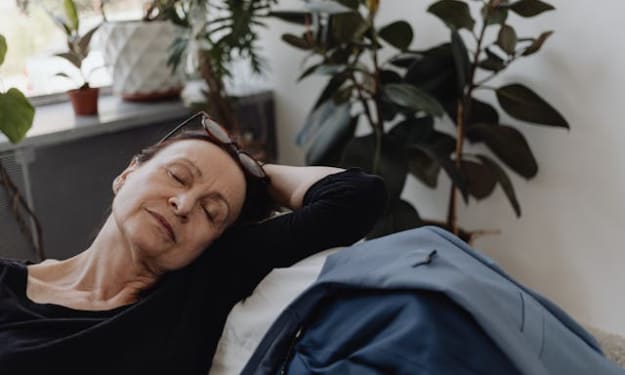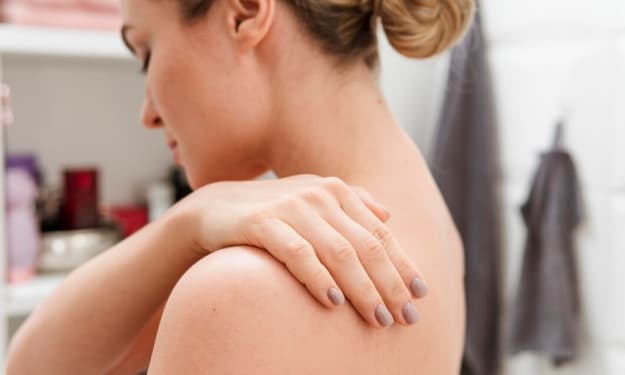5 Ways To Get Rid Of Sore Muscles Without Pain
Easy ways that will give you immediate relief without breaking the bank.

Sore muscles are common in a lot of people and could either be mild or severe. However, the leading cause of sore muscles is a lot of stress and strain on the muscles.
That could result from either excessive working out, being in one position for a long time, or injury. Some of the ways you can deal with sore muscles without a lot of pain or effort include:
1. Massage
Massage helps relax the affected muscles and increase blood and nutrient flow which speeds up recovery. You can go to a spa to get your message, or you can have a friend or your partner massage you.
However, if you do not want to leave the house and have nobody to help you, a massage chair is the best option. It uses vibrations and heat to help relieve pain in your deep muscles. You can increase or reduce the intensity of the vibrations and heat to suit your needs.
You can also use a hand massager. This is a handheld device that also uses vibrations to relax your muscles and relieve pain in the underlying muscles. They do that by breaking down the lactic acid that causes pain and tiredness.
2. Cold compress
Using a cold compress on the sore muscles helps numb the area, which reduces the pain. The cold also helps reduce swelling, inflammation, and muscle breakdown that results in DOMS by constricting your blood vessels.
You can apply a cold compress by wrapping a pack of ice cubes with a towel and placing it on the affected area.
Alternatively, if you do not have any ice cubes, you could dampen a towel, place it in the freezer for a few minutes, and then apply it to the affected muscles. You can also sit in an ice bath for around 10 minutes after an intense workout.
3. Using heat
The increased temperature on your skin after applying heat helps increase blood flow to the affected muscles. That helps increase the flow of nutrients that the muscle need to recover. The heat also helps soothe discomfort and increase the flexibility of the affected muscles.
You can use either dry or moist heat. Dry heat also called conducted heat therapy, involves dry heating packs, heating pads, and saunas. On the other hand, Moist heat includes moist heated pads, steamed towels, or hot baths.
You can also seek professional heat treatments, which mainly use heat from ultrasounds to relieve pain in the muscles and tendons.
4. Foam roll
This is a form of self-massage. Foam rolling helps relieve delayed onset muscle and tendon soreness. It also helps ease muscle fatigue, repair injured and worn-out muscles, and increase flexibility.
Foam rolling also helps reduce edema, which is swelling in the muscles and promotes tissue healing. To foam roll, place your muscle roller under the affected muscles and roll your entire body over it, emphasizing the injured muscles. For best results, consult a trainer on how to do it for different muscle groups.
5. Increasing protein intake
Protein is known as the body-building food group because it helps grow new muscles and repair injured ones. You can take protein from either milk or yogurt before your workout to boost energy and after a workout to help heal the damaged muscles.
You can also take protein supplements from your doctor or buy them over the counter. Proteins also give you strength when working out, which keeps your muscles from wearing out.
6. Wearing compression gear
Having compression gear for 24 hours after working out helps reduce DOMS and speeds up the recovery of injured muscles. The compression gear holds those muscles in place and promotes blood flow to fasten healing.
They also reduce soreness by preventing fluid buildup in your muscles after a workout and constricting your muscles. That aids in removing creatine, an enzyme in the muscles that causes pain. Some types of compression gear include leggings, socks, and sleeves.
If these methods do not help the soreness, consult your doctor. It could be a sign of an underlying health issue.
About the Creator
Stephanie Snyder
Stephanie Caroline Snyder graduated from The University of Florida in 2018; she majored in Communications with a minor in mass media. Currently, she is an Author, a Freelance Internet Writer, and a Blogger.






Comments
There are no comments for this story
Be the first to respond and start the conversation.